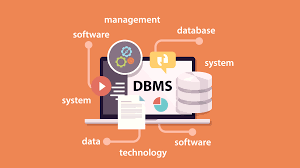Database management systems (DBMSs) are the backbone dbms of most businesses. They allow you to store data in a way that makes it easy for you to access and use. By understanding what a DBMS is and how it works, you can make better choices when it comes to choosing one for your business.
What is a hierarchical database management system?
A hierarchical database management system (HMDBS) is a type of database management system (DBMS) that organizes data into a tree structure. This structure provides a way to quickly and easily find information in the database, making it easier for users to access data they need. In addition, the tree structure makes it easy to change or add data nodes to the database without having to update or recompile the entire database.
A HMDBS is often use in large organizations that have many different types of data, such as customer lists, product catalogs, and employee records. Because a HMDBS allows users to quickly and easily access the information they need, it is often use in applications such as customer service, sales, and inventory management.
Pros and Cons of Hadoop
Hadoop is a popular open-source platform for storage, processing, and analysis of big data. It offers a number of benefits over traditional database management systems (DBMS), such as the ability to handle large amounts of data efficiently and the ability to scale up or down as needed. However, Hadoop has its own set of drawbacks, including the need for experienced users to manage it effectively and the difficulty in integrating it with other systems.
What are the different components of a Hadoop cluster?
A Hadoop cluster typically consists of three main components: the DataNode, the JobTracker, and the Distributed File System (DFS).[1] The DataNode is the heart of a Hadoop cluster. It handles all of the data processing tasks, such as ingesting data from sources like HDFS and MapReduce jobs, distributing data to various nodes in a cluster, and managing job outputs. The JobTracker coordinates all of the MapReduce jobs in a cluster and manages how resources are allocate to them. Finally, DFS provides a common storage location for all files generated by MapReduce jobs.
How to set up a Hadoop cluster?
Setting up a Hadoop cluster can be a daunting task for those unfamiliar with the technology. Luckily, there are many online resources that can help get you start. In this blog post, we will walk through the process of setting up a Hadoop cluster using the Hortonworks Data Platform (HDP) distribution.
How to use Hadoop for data analysis?
Hadoop is a distributed filesystem and data processing system used mainly in big data applications. It can be used to manage large amounts of data by using algorithms like MapReduce and HDFS. Hadoop can be used to analyze large datasets quickly and efficiently.
Conclusion
A hierarchical database management system (HDBS) is a database design that uses a tree structure to organize data. A typical hierarchy might look something like this:
At the top of the hierarchy would be an entity, such as a person or company, and beneath that entity would be one or more attributes. For example, an attribute for a person might include name, address, phone number, and so on. Finally, under each attribute would be one or more rows of data. In the diagram above, Person has two attributes—first_name and last_name—and there are three rows in the table for Persons.
